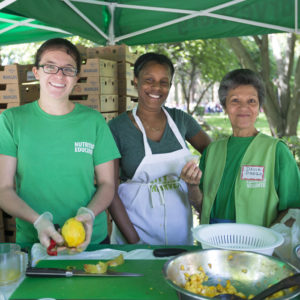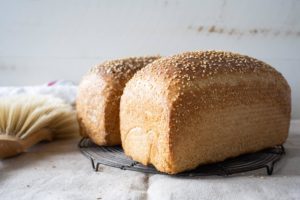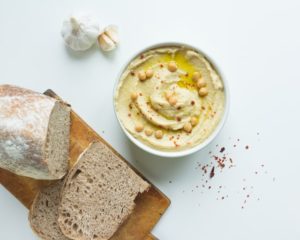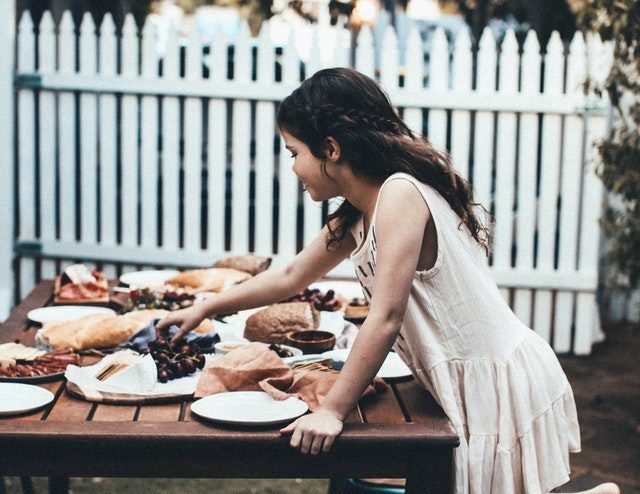When it comes to zero-waste dining, there’s plenty of skepticism as to how achievable it might be, particularly considering the kitchen is usually the place that we generate the most waste—both organic and packaging waste. For many people, the “zero” component of zero waste cannot be reconciled when we consider the amount of plastic, cardboard, and glass we use on a daily basis, as well as those long-forgotten leftovers in the fridge.
 However, it’s always worth reminding oneself that zero waste is a journey and not a destination, and working towards a sustainably managed kitchen is easier than you might think. In fact, with a little preparation and touch of creativity, there are countless ways to reduce, reuse, and recycle all types of waste in a variety of new and exciting ways.
However, it’s always worth reminding oneself that zero waste is a journey and not a destination, and working towards a sustainably managed kitchen is easier than you might think. In fact, with a little preparation and touch of creativity, there are countless ways to reduce, reuse, and recycle all types of waste in a variety of new and exciting ways.
For the aspiring zero-waste chefs, we’ve rounded up DIY zero-waste recipes to help push you closer to a sustainable kitchen. Including recipes to minimize packaging and to minimize food waste, read on to learn how to cook with food scraps and reduce the amount of packaging brought home from the grocery store with these simple tips.

Source: cityharvest.org
Zero-Waste Recipes to Reduce Packaging
Consider all the pre-prepared and manufactured foods normally purchased, and then consider the packaging that comes along with it. While some may still come in recyclable paper packaging, chances are a large proportion of what ends up in the shopping cart is plastic or even multi-layer packaging like Tetra Paks that aren’t as recyclable as they might seem.
The good news is that a lot of staple and “convenience” foods can be made at home with ingredients that are available in bulk or paper packaging. This means the grocery store can be skipped entirely and the farmers’ market can provide the freshest (and healthiest) ingredients that can be stored in mason jars (or old glass jars from previous purchases) in the kitchen, ready for use. Take a look at these recipes to get started.

Source: minimalistbaker.com
Peanut butter and other nut butters
With a food processor, it’s incredibly easy to make peanut or any other kind of nut butter at home. Just add in a nut of choice and blend until it’s the desired consistency. It may take as long as 15 minutes to become creamy, but don’t give up!
The result is the best nut butter ever eaten, and to add a personal touch throw in a little honey, salt, or even chocolate to make the creation perfect. Check out a great DIY peanut butter recipe here and never look back!

Source: theperfectloaf.com
Bread and crackers
Bread isn’t as easy as muffins or cakes and takes a little practice to get the hang of, but it’s incredibly rewarding and eliminates plastic bags and fasteners. Baking with commercial yeast is a good place to start, but the best zero-waste cooking recipes are all about sourdough.
There are plenty of resources online to get your starter started, which can then be used to make anything from a nutritious sandwich loaf to traditional San Francisco-style sourdough bread. However, even if the first loaves don’t go as planned, keeping a sourdough starter almost always produces some discard, which despite the name, is definitely NOT waste. Today, clever bakers have found endless ways to utilize even your so-called “discard”, with some particularly great byproducts including crackers, pancakes, and pretzels.

Hummus
It’s hard not to love this delicious chickpea dip, yet each tub we devour results in plastic waste which is rarely reusable. Believe it or not, basic hummus is made with just five ingredients that are available to buy with zero plastic packaging. It can also be created quickly using a blender or food processor for the most flavorful way to save money and the planet at the same time.
From a simple standard hummus it’s easy to branch out into roasted red pepper, coriander, or whatever other flavors dreamed of, so the store-bought stuff won’t be missed. Pro tip: dried beans are cheaper than canned, can be easily bought in bulk, and they’re not difficult to rehydrate. They’re a must in any zero-waste kitchen!

Source: simpleveganblog.com
Plant “milks”
The rise of plant-based diets over the past few years has seen an explosion in the popularity and availability of vegetable milks such as almond, soy, and oat milk. Unfortunately, these milk-substitutes are almost always sold in a Tetra Pak, meaning that while the contents may be significantly more sustainable than animal milks, the packaging poses exactly the same problem.
Luckily, making your own plant milk couldn’t be easier, and more often than not, these zero-waste food recipes require little more than 24 hours of soaking and then straining through a cheesecloth. Whatever the favorite base, recipes can be found here, and most will last up to a week when stored in a reusable glass bottle with a lid.
Zero-Waste Recipes to Minimize Food Waste
One skill we should all have in our zero-waste repertoire is the ability to use all those bits that tend to get tossed for one reason or another. This can be fruit and vegetables that that are overripe, foods that you don’t have enough of to make one whole meal, or even peels and offcuts. Here are some handy go-to recipes that reduce waste and stretch what you have in the kitchen.

Minestrone soup
This classic soup is a powerhouse zero-waste dinner recipe, as almost anything leftover can be added and it will still be delicious after it has stewed for a few hours! The essential ingredients include tomatoes, olive oil, and Italian herbs for the base, but beyond that experiment with leftover pasta or rice, beans, and even extra meat or bones (for flavor).
A good zero-waste minestrone recipe to check out comes from the Zero Waste Chef Anne Marie Bonneau, who recommends adding in that old Parmesan rind from the back of the fridge for a bonus umami boost. Finally, don’t be afraid to experiment with parts of the vegetable normally thrown away, for example, broccoli stems and leaves are the ideal addition to any minestrone broth.

Smoothies
Another zero-waste trick for cleaning the fridge, smoothies are the perfect way to eat fruit and vegetables that are past their prime. Smoothies can be freestyled with what is found in the kitchen, but the essential gist is that everything is placed into a blender and blended until smooth. Bananas and ice (or ice cream!) help give it a creamier consistency, and apples or apple juice in particular do a great job of reducing the bitterness of leafy greens. Some zero-waste smoothie recipes even include zucchinis or radishes!

Source: allrecipes.co.uk
Pesto
Leftover herbs? Put them in a pesto. The word pesto actually means simply “to pound” or “to crush”, and while the traditional Italian pesto alla genovese that most of us are familiar with is made with basil, this can be substituted for any fresh herbs you have on hand.
There is, of course, no rule about mixing different herbs together, or combining herbs with spinach, or even using carrot leaves for a true zero-waste pesto. Soft nuts like cashews can replace pine nuts, and miso makes a flavorful substitute for parmesan cheese. All you need is a blender or a food processor.
Soup Stock
A standard habit in any zero-waste home should be to save vegetable scraps for soup stock. Place scraps and offcuts like carrot tops, tomato cores, and even onion skins into a bag

Source: countryfile.com
or other container and store them in your freezer. Once you’ve collected enough to fill a pot, place them inside and submerge them in water, then allow them to simmer for around 30 minutes (don’t boil, this makes it bitter). This creates a vegetable stock that can be used to make soup or in any recipe that calls for stock. Remember to keep the scraps for composting when done!
For more zero-waste food recipes with practical tips on how to maximize what is found in the kitchen, check out the The Zero Waste Cookbook. Anne Marie Bonneau’s website The Zero Waste Chef is another invaluable resource for zero-waste cooking recipes and more. She also has a zero-waste recipe book coming out in April in the US and Canada.
Additionally, for more inspiration on going zero waste at home, check out our tips and tricks and subscribe to our blog, or if your business is committed to going zero waste, then contact one of our TRUE Advisors for information and insight tailored sustainability goals.
Additionally, for more inspiration on going zero waste at home, check out our tips and tricks and subscribe to our blog, or if your business is committed to going zero waste, then contact one of our TRUE Waste Advisors for information and insight tailored sustainability goals.

